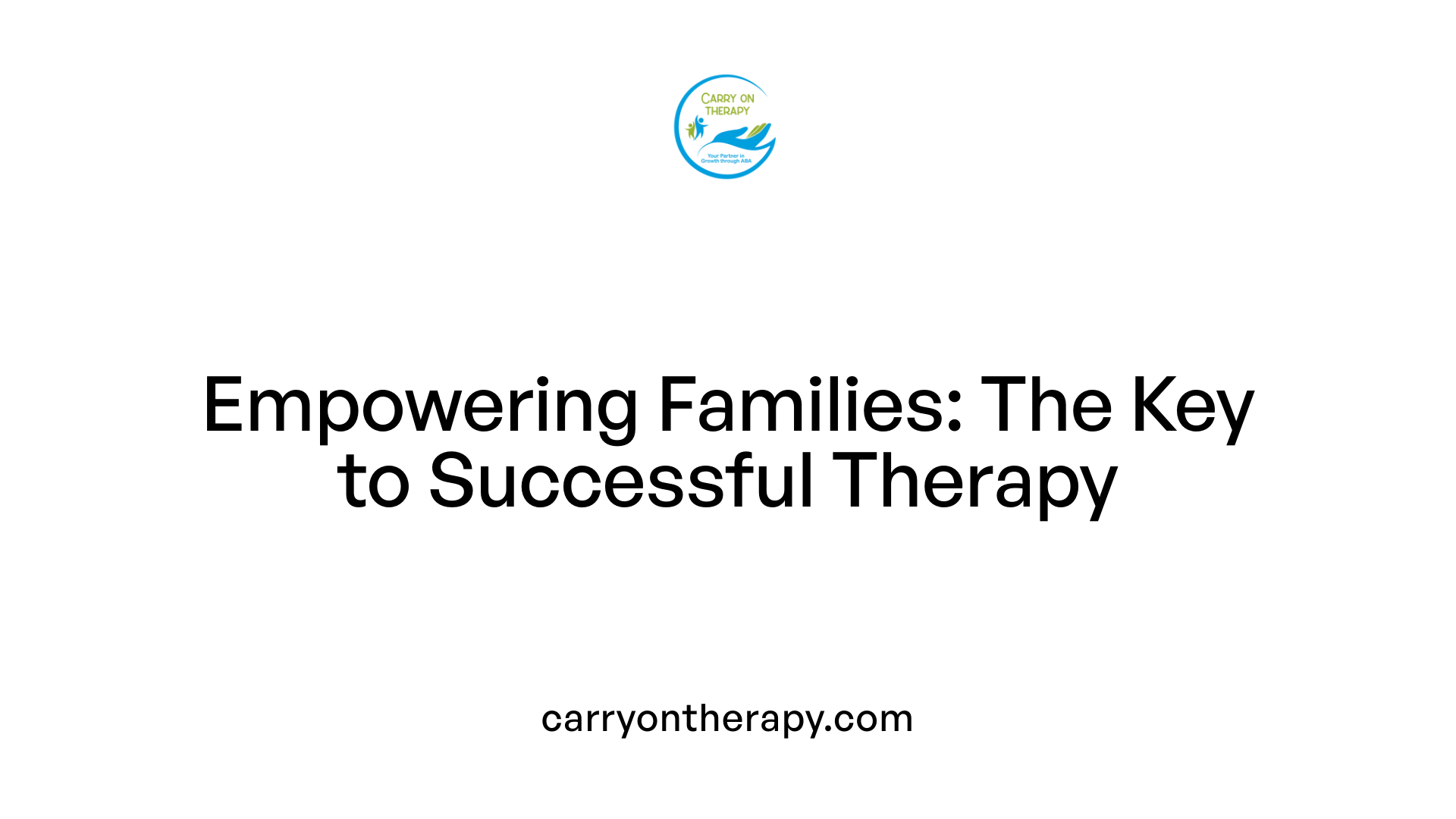Understanding the Role of Occupational Therapy in Child Development
Occupational therapy (OT) plays a crucial role in helping children develop independence and essential life skills, especially those facing challenges like autism spectrum disorder (ASD). By focusing on physical, sensory, and cognitive development, OT supports children's ability to perform daily activities and fosters social interaction, laying the foundation for effective teamwork and collaboration. This narrative explores how occupational therapy promotes these vital interpersonal skills, alongside its integration with other therapies such as applied behavior analysis (ABA) to create a comprehensive developmental framework.
The Foundations of Occupational Therapy for Children

What is Occupational Therapy and What Does It Focus On?
Occupational therapy (OT) is a health care approach designed to help children overcome physical, sensory, and cognitive challenges that may hinder their daily functioning. By working on these areas, OT focuses on enabling children to perform everyday activities such as dressing, eating, and engaging socially.
How Does Occupational Therapy Support Children’s Development?
Occupational therapy helps children gain independence and develop vital daily living skills. This is achieved through customized interventions that improve fine and gross motor skills, enhance cognitive function, and address sensory processing difficulties. OT supports children by fostering abilities important for self-care, communication, and emotional regulation.
Evidence-Based Sensory Integration Techniques
A central part of occupational therapy involves sensory integration strategies tailored to each child's specific needs. These evidence-based techniques aid children in managing sensory sensitivities, enabling them to better process the world around them and participate more fully in everyday activities.
Settings Where Occupational Therapy Takes Place
OT is delivered in diverse environments to ensure children can generalize their skills effectively. These settings include the child’s home, educational institutions such as schools, and community centers where therapy is often embedded in natural routines and play activities to maximize engagement and learning.
By focusing on the child's physical, sensory, and cognitive needs within supportive environments, occupational therapy plays a crucial role in nurturing independent and confident young individuals.
Applied Behavior Analysis (ABA): A Science-Based Behavioral Intervention
What is Applied Behavior Analysis (ABA) therapy and how is it used to support individuals with autism?
Applied Behavior Analysis (ABA) therapy is a scientific, individualized method focused on understanding and improving behavior. It is widely recognized for its effectiveness in supporting children with autism spectrum disorder (ASD) by helping them develop social, communication, and daily living skills.
ABA works by using positive reinforcement to encourage desired behaviors, while reducing challenging or interfering behaviors. Techniques like discrete trial training break complex skills into smaller, manageable steps which makes learning structured and measurable. Progress is consistently tracked using data-driven methods to tailor goals specific to each child’s needs.
ABA programs emphasize structured routines and use prompting strategies, helping children gradually gain independence and improve social interactions. The therapy often includes natural environment teaching, which integrates skill development within everyday settings to promote generalization and real-life application.
Who typically provides ABA therapy and what qualifications do they have?
ABA therapy is delivered by a team of trained professionals. Board Certified Behavior Analysts (BCBAs) are the primary therapists responsible for designing and overseeing individualized treatment plans. These professionals have completed graduate-level coursework, supervised fieldwork, and rigorous certification exams. Some BCBAs hold advanced doctoral degrees.
Registered Behavior Technicians (RBTs), who have undergone specialized training and competency assessments, provide direct therapy under the supervision of BCBAs. In some cases, Board Certified Assistant Behavior Analysts (BCaBAs) also contribute by supporting treatment implementation.
Therapy sessions occur across diverse environments such as homes, schools, and clinics. Active family involvement is crucial, as caregivers work collaboratively with therapists to reinforce skills consistently outside formal sessions, which enhances outcomes and fosters continued progress.
By combining structured, evidence-based strategies with personalized goals and qualified professionals, ABA therapy offers an effective, comprehensive approach to support children with autism in achieving meaningful behavioral and functional improvements.
Primary Goals and Unique Approach of ABA Therapy in Autism

What are the primary goals of ABA therapy in treating autism?
ABA therapy aims to develop vital skills such as communication, social interaction, self-care, play, and academic abilities, significantly enhancing the quality of life of children with autism. It focuses on reducing challenging behaviors by identifying their triggers and teaching functional alternatives using reinforcement strategies. ABA breaks down complex skills into smaller, manageable steps and uses data-driven methods to track progress and tailor interventions to each child's specific needs. Techniques such as Natural Environment Teaching and Pivotal Response Treatment personalize therapy based on individual preferences, promoting independence, meaningful engagement, and social participation while respecting neurodiversity and strengths.
How does ABA therapy differ from other types of therapies for autism?
ABA stands out due to its scientific, behavior-centered, and highly individualized approach. It modifies behaviors through positive reinforcement and continuous data assessment. In contrast, occupational therapy (OT) primarily focuses on improving motor skills, sensory processing, and daily living activities using hands-on and play-based interventions. While OT targets sensorimotor development and addresses sensory sensitivities, ABA concentrates on behavior modification and acquiring functional skills by systematically measuring and adjusting strategies. Both therapies complement each other, but ABA's hallmark is its structured behavior analysis and data-driven intervention methods, making it distinct in the realm of autism therapies.
Occupational Therapy’s Role in Enhancing Teamwork and Collaboration

How does occupational therapy promote teamwork and collaboration among children?
Occupational therapy (OT) plays a vital role in fostering teamwork and collaboration among children by strengthening several foundational skills critical for social interaction. OT targets the development of social skills and communication abilities, which are essential for children to effectively engage and cooperate with their peers.
OT’s impact on social skills and communication
By addressing communication through improved motor coordination and sensory processing, OT helps children better express themselves and interpret social cues. This support enables smoother interactions that are the basis of teamwork and collaborative play.
Development of fine and gross motor skills facilitating interaction
Improving fine motor skills, such as handwriting or using utensils, and gross motor skills, such as running or balancing, empowers children to participate confidently in group activities and shared tasks. These physical skills are fundamental for joining games, classroom tasks, and collaborative projects.
Sensory processing support improving social engagement
Sensory integration techniques within OT help children manage sensitivities to sounds, touch, or movement that could otherwise disrupt social involvement. By regulating sensory input, children sustain attention and emotional control, which are crucial for successful cooperative play.
Use of play and daily activities to foster cooperation
Therapists incorporate play and everyday activities as practical tools to teach cooperation and teamwork. These enjoyable and functional experiences help children practice social interactions in familiar contexts, making learning relevant and motivating.
Collaborative work with families and caregivers
OT actively involves families and caregivers in the therapeutic process. This collaboration ensures that strategies to enhance social skills and cooperation are reinforced beyond therapy sessions, creating consistency across home, school, and community settings.
Through this multifaceted approach, occupational therapy uniquely supports children in building the skills needed to work effectively in teams and develop lasting collaborative relationships.
Integrating Occupational Therapy and ABA for Holistic Child Development
How Do Occupational Therapy and ABA Combine for a Comprehensive Approach?
Occupational Therapy (OT) and Applied Behavior Analysis (ABA) work hand-in-hand to support children, particularly those with autism spectrum disorder (ASD) and developmental delays. While OT focuses on physical, sensory, cognitive, and daily living skills, ABA uses behavior modification techniques through reinforcement and structured routines. Together, they create a well-rounded intervention that addresses both functional skills and behavioral challenges.
In What Ways Do They Address Overlapping Challenges?
The therapies overlap in crucial areas like sensory processing, social skill development, and self-regulation. OT helps manage sensory sensitivities and develops fine and gross motor skills, while ABA reinforces these improvements through positive behavior strategies and teaches communication skills. This dual focus helps children build confidence and independence in social interactions and daily routines.
What Does Joint Goal-setting and Therapy Collaboration Look Like?
Interdisciplinary collaboration between OT and ABA therapists includes setting joint goals tailored to each child's needs. They may hold joint sessions to ensure consistent teaching and reinforcement of skills across settings like home and school. This synergy maximizes therapeutic progress and helps generalize learned skills beyond therapy environments.
How Does This Integration Support Children with ASD and Developmental Delays?
Children with ASD benefit from combined OT and ABA by receiving support for motor skills, sensory integration, communication, and behavioral management in one cohesive plan. OT’s sensory integration techniques are reinforced by ABA’s data-driven methods, helping children navigate sensory sensitivities and behavioral challenges more effectively.
What Are the Benefits of Interdisciplinary Collaboration for Therapeutic Outcomes?
The integrated approach not only fosters better developmental gains but also reduces stress for families by providing a unified support system. Collaboration encourages transparency, consistent progress tracking, and customized strategies, thus enhancing skill generalization and independence in various environments.
| Area of Focus | OT Contribution | ABA Contribution |
|---|---|---|
| Sensory Processing | Sensory integration interventions | Reinforcement of adaptive sensory behaviors |
| Social Skills | Development through play and routines | Behavior shaping and communication skill teaching |
| Daily Living Skills | Teaching self-care, motor skills | Breaking tasks into steps, positive reinforcement |
| Communication | Fine motor skills for communication devices | Discrete trial training and natural environment teaching |
| Therapy Collaboration | Joint goal setting and transparency | Data tracking, structured reinforcement |
The Role of Family and Caregiver Collaboration in Therapeutic Success

Importance of parental involvement in OT and ABA
Parental involvement is essential in both occupational therapy (OT) and applied behavior analysis (ABA) as it ensures that strategies taught during therapy sessions are understood and effectively implemented at home. Engaging families helps tailor interventions to the child’s environment and daily routines, which increases the relevance and impact of therapy.
Consistent reinforcement across home and therapy
Consistent reinforcement of therapeutic techniques across home and clinical settings is critical for skill development and generalization. When parents and caregivers apply the same methods as therapists, children experience continuity that enhances their learning and boosts confidence in performing skills independently.
Reducing family stress and providing multifaceted support
An integrated approach involving collaboration among therapists supports families by reducing stress and providing comprehensive insights into the child’s progress. A holistic support system addresses multiple developmental domains, offering families practical tools and emotional reassurance.
Transparency and communication between therapists and families
Open communication and transparency about the child’s history, progress, and challenges facilitate trust between therapists and families. Regular updates and joint goal-setting sessions empower parents to actively participate and make informed decisions regarding their child’s care.
Strategies for extending therapy effects outside clinical settings
Therapists encourage families to incorporate therapy techniques into daily activities such as dressing, eating, and playtime, fostering skill practice in natural environments. Providing training and resources enables caregivers to confidently support continued development, ensuring gains are maintained and expanded beyond therapy sessions.
Future Directions: Promoting Independence through Collaborative Therapies

Long-term impact of combined therapies on independence
The integration of occupational therapy (OT) and applied behavior analysis (ABA) offers lasting benefits for children with autism spectrum disorder (ASD). By addressing both behavioral challenges and functional daily living skills, this combined approach fosters sustained independence. Children gain mastery over self-care routines, social interactions, and sensory management, enhancing their ability to adapt to new environments throughout their lives.
Enhancing functional life skills and self-regulation
Collaborative therapy plans focus on strengthening essential functional skills such as dressing, eating, personal hygiene, and communication. This promotes self-regulation by teaching children to manage sensory sensitivities and emotional responses through targeted interventions. OT builds fine and gross motor skills, while ABA reinforces positive behaviors and supports generalization of these skills across home, school, and community settings.
Research supporting interdisciplinary approaches
Scientific studies demonstrate that combining OT and ABA leads to significant improvements in social skills, sensory processing, and behavioral regulation. Interdisciplinary collaboration, involving joint goal-setting and consistent reinforcement, maximizes therapeutic outcomes. Evidence shows that personalized plans tailored to individual needs are most effective at fostering progress and enhancing quality of life.
The role of communication skills development
Communication is central to promoting independence. ABA utilizes techniques like discrete trial training to advance social and communication skills, while OT develops the fine motor abilities necessary for communication devices and expressive activities. Speech therapy further complements this by addressing language comprehension and social communication, resulting in a comprehensive support system.
Encouraging ongoing interaction and progress monitoring
Active collaboration between therapists, families, and caregivers ensures that progress is continuously monitored and strategies are reinforced outside of therapy sessions. Transparent communication about the child's history and needs creates a supportive environment. This ongoing interaction empowers families to engage in goal-setting and adapt interventions as the child matures, sustaining momentum toward independence.
The Power of Collaborative Therapeutic Approaches
Occupational therapy profoundly contributes to fostering teamwork and collaboration among children by enhancing vital social, motor, and sensory skills. When integrated with applied behavior analysis, this creates a comprehensive, evidence-based framework that addresses both behavioral and functional needs. Interdisciplinary collaboration among therapists and active family participation amplify the benefits, ensuring skills transfer across environments and promoting independence. This holistic approach not only supports children with autism and developmental challenges in their daily lives but also equips them with the foundational teamwork and social capabilities necessary for meaningful participation in society.
References
- When to Combine Occupational Therapy and ABA for ...
- Occupational Therapy for Children: 5 Key Points
- Occupational Therapy for autism: 3 benefits for children
- How ABA and Occupational Therapy Go Hand in Hand
- ABA, Occupational Therapy, and Speech ...
- Questions and answers about ABA
- Applied Behaviour Analysis (ABA) and autistic children
You have to Start to be Great!






